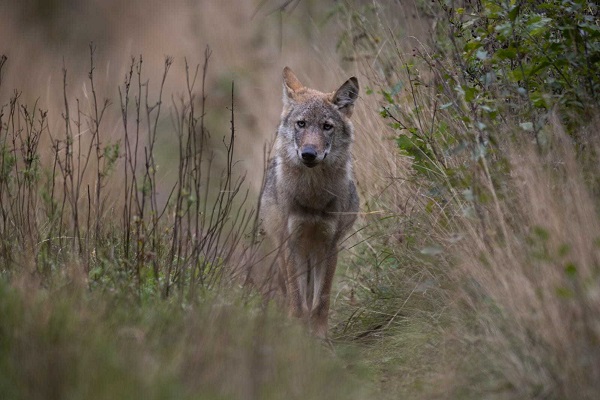 Credit: Tobias Reimann
Credit: Tobias Reimann
Luxembourg's Nature and Forest Agency has reported that the authorities are looking into the possibility of a wolf encounter in the north of the country.
A dead calf was recently found in a pasture in the Brachtenbach area (Wincrange). The Nature and Forest Agency said it had most likely been killed by a predator. Based on a report by its experts, the administration could not rule out the possibility of this being a wolf.
For the purpose of genetic analysis, samples were taken from the calf's bite wounds in the hope of capturing enough saliva with usable DNA from the perpetrator. The samples are being sent to the Senckenberg Institute in Gelnhausen, Germany, which is the reference laboratory in this area. The results are expected in a few weeks.
The Nature and Forest Agency noted that there have been regular confirmed records of lone wolves in Luxembourg since 2017. In nearby countries, for example in the High Fens in Belgium, wolf packs have been living again for several years.
Members of the public are asked to immediately report any possible evidence of the presence of wolves to the Nature and Forest Agency for monitoring purposes via email: wolf@anf.etat.lu.
The administration recalled that wolves are strictly protected throughout Europe. They play an important role in our ecosystems, where as a top predator they can contribute to reducing excessive densities of hoofed game. Luxembourg has been preparing for the possible return of the wolf in recent years in order to define how to deal with this animal species from the outset. This forms part of the action and management plan for dealing with wolves in Luxembourg, which was drawn up and presented to the public together with all stakeholders from agriculture, science, nature conservation, private forest owners and hunting.
The administration added that wolves generally avoid direct contact with humans. Encounters between humans and wolves are therefore extremely rare, but not impossible. The brochure "Wölfe in Luxemburg?" (Wolves in Luxembourg?) explains the rules of conduct that should be followed in the event of an encounter with a wolf, namely: do not run away, as this can trigger the animal's hunting instinct; do not move towards the wolf, always keep an eye on the wolf but avoid eye contact; get the wolf's attention, call out and wave your arms. If the wolf does not retreat immediately, move back slowly and create a respectful distance; if the wolf continues to approach, continue to call out to him and throw branches, stones, etc. at him; never try to attract wolves with food.
The wolf action plan and the brochure on rules of conduct are available online free of charge and in print from the Nature and Forest Agency via tel.: 247-56652, as well as in the administration's visitor centres: Mirador in Steinfort, A Wiewesch in Manternach, Ellergronn in Esch-sur-Alzette, Biodiversum in Remerschen and Burfelt near Insenborn.








